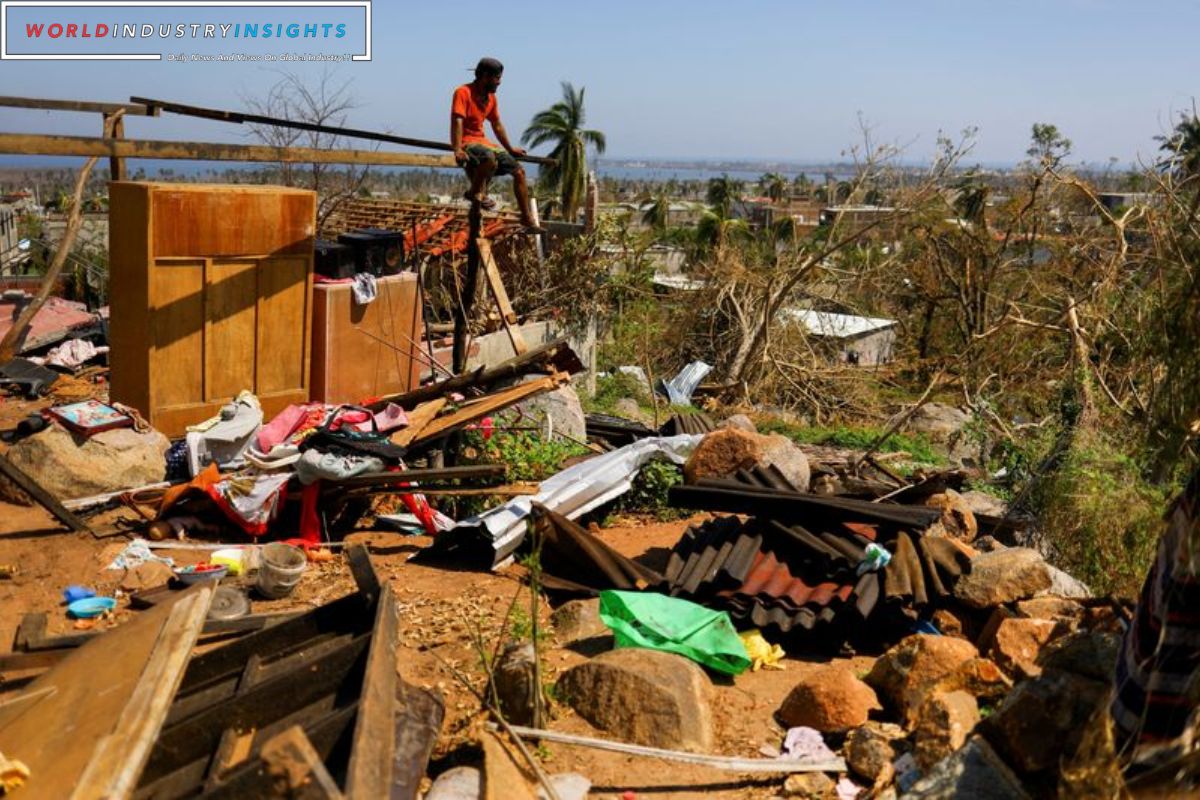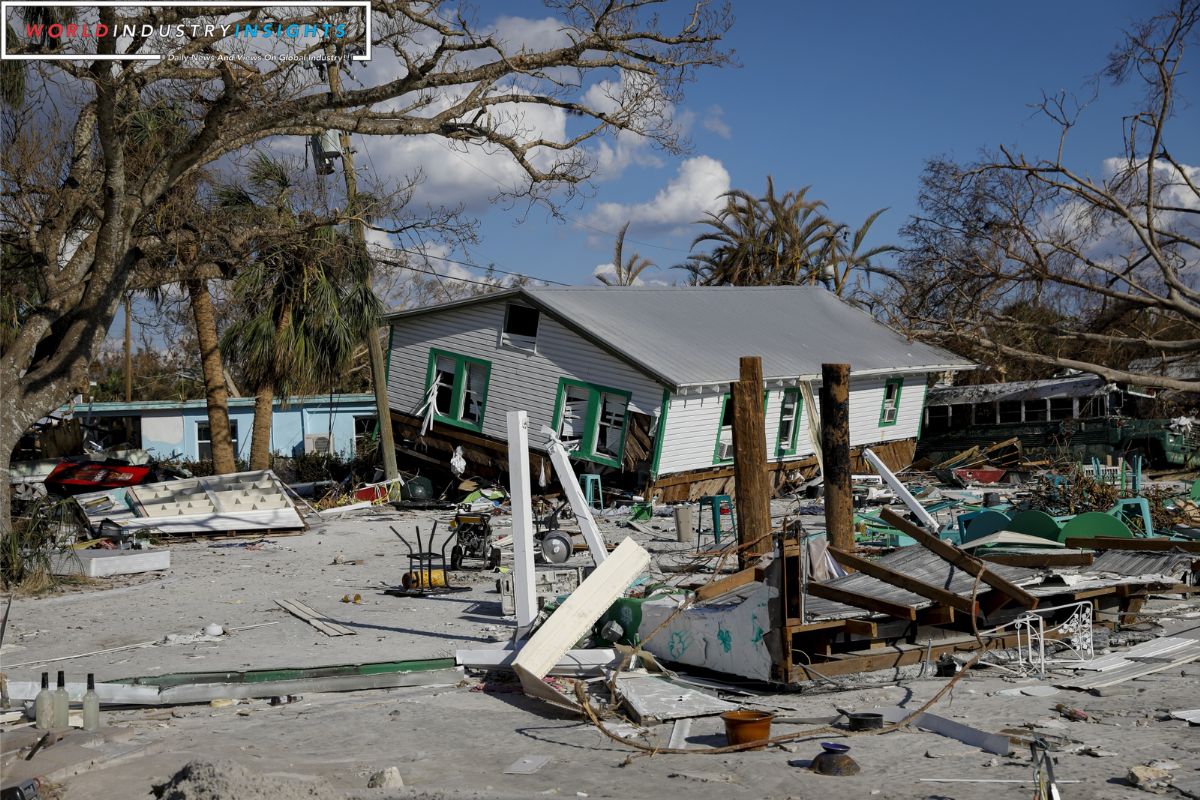US Property Reinsurance: On January 1, a seismic shift in the U.S. property reinsurance market sent shockwaves through the insurance industry, as rates skyrocketed by an astounding 50%. This unprecedented surge has left insurers and reinsurers scrambling to reassess their risk portfolios and evaluate their exposure to potential catastrophic losses.
The reasons behind this sudden spike are multifaceted, ranging from the impact of recent natural disasters to the increasing frequency and severity of climate-related events. As the dust settles, it becomes evident that this surge in reinsurance rates will have far-reaching implications for insurers, reinsurers, and ultimately, policyholders.
The question remains: how will the industry adapt to this new landscape, and what does it mean for the future of property insurance in the United States?
Key Takeaways
- U.S. property catastrophe reinsurance rates increased by up to 50% on January 1 renewal date.
- Reinsurers are aiming to recoup losses from recent natural disasters.
- The surge in rates is not limited to the U.S., as Turkey saw rates double and policies affected by disasters had a 50% surge.
- The industry must adapt to the changing landscape and implement comprehensive risk management strategies to mitigate future risks.
U.S. Property Catastrophe Reinsurance Rates Surge on Renewal Date
U.S. Property Catastrophe Reinsurance Rates Experience Dramatic Surge on Renewal Date
The January 1 renewal date has sent shockwaves through the U.S. property catastrophe reinsurance market as rates have skyrocketed by up to 50%. This unprecedented surge is a clear indication that reinsurers are determined to recoup their losses from the devastating natural disasters that plagued the country.
Also Read: Private Credit Lenders Reshaping Australias Property Market
Wildfires, storms, and hurricanes have wreaked havoc on the insurance industry, leaving insurers with massive payouts and forcing them to hike their rates.
But the impact of this renewal date is not limited to the U.S. alone. In Turkey, rates have doubled, and policies affected by previous natural disasters have witnessed a staggering 50% surge. This data-driven analysis highlights the dire situation faced by reinsurers and underscores the urgent need for a comprehensive risk management strategy.
With catastrophe events becoming more frequent and severe, it is imperative for insurers to adapt to this changing landscape. The surge in property catastrophe reinsurance rates serves as a wake-up call for the industry, demanding a proactive approach to mitigate future risks.
Only through mastery of risk management can the industry hope to weather the storm and protect its stakeholders.
Market Nuances: Differentiated Rates Based on Client Circumstances
As the U.S. property catastrophe reinsurance rates experience a dramatic surge on their renewal date, it becomes evident that the market nuances are playing a crucial role in shaping the differentiated rates based on individual client circumstances.
Rates remained unchanged for clients without exposure to natural disasters in the previous year. This highlights the importance of understanding and assessing each client’s specific risk profile.
Tom Wakefield, the global CEO of Gallagher Re, emphasizes the significance of individual client factors in determining reinsurance rates. This data-driven approach allows insurers to tailor their pricing strategies to reflect the varying levels of risk faced by different clients.
With market nuances becoming more pronounced, it is essential for insurers to analyze and evaluate each client’s circumstances thoroughly. This ensures that rates are accurately priced, providing adequate coverage while managing risk effectively.
Global Property Catastrophe Reinsurance Rates Experience Rise
Global property catastrophe reinsurance rates have experienced a significant rise, with an increase of up to 30% on January 1 for policies impacted by losses. This surge in rates is a clear indication that the global insurance market is facing a daunting challenge.
Reinsurance broker Guy Carpenter, in a separate release, has confirmed this alarming trend. The conflicts in Gaza and Ukraine have forced reinsurers to shift their focus towards war, political violence, and terrorism policies. These unprecedented geopolitical events have created an environment of uncertainty and increased risk, leading to higher insurance rates.
Insurers and reinsurers alike are grappling with the aftermath of these catastrophic events, and as a result, they have no choice but to pass on the financial burden to policyholders. It is imperative for policyholders to stay informed and be prepared for the inevitable impact on their premiums.
Reassessment of Coverage in Conflict Zones
The conflicts in Gaza and Ukraine have prompted a reassessment of coverage in potential conflict zones. As reinsurers adjust their risk management strategies, the focus is now on war, political violence, and terrorism policies. The changing landscape has caused aviation reinsurance rates to rise by as much as 25%.
This is a clear indication of the increased risks associated with operating in conflict zones. Reinsurers are now realizing the need to reevaluate their coverage in order to adequately protect their investments. The stakes are high, and the potential losses are substantial.
With the volatile situation in these regions, it is crucial for reinsurers to stay ahead of the game and ensure they have the appropriate coverage in place. This reassessment is a necessary step towards mitigating potential losses and ensuring financial stability.
Rise in Rates Across Different Markets
With the reassessment of coverage in potential conflict zones comes a surge in reinsurance rates across various markets. The impact of this surge is evident in the aviation and marine sectors, where rates have skyrocketed to unprecedented levels.
Aviation reinsurance rates have increased by up to 25%, reflecting the changing risk landscape and the need for insurers to protect themselves against potential losses.
Meanwhile, in the marine market, war risk premiums for ships entering the Red Sea have surged tenfold, highlighting the heightened risks associated with navigating through conflict-prone regions.
These rate hikes can be attributed to the need for insurers to mitigate losses from natural catastrophes, which resulted in approximately $100 billion in insured losses in 2023.
As insurers strive to protect their bottom lines, it is clear that reinsurance rates across different markets are on an upward trajectory, signaling a challenging environment for policyholders.
Conclusion Of US Property Reinsurance
The surge in U.S. property reinsurance rates on January 1st has sent shockwaves through the market, leaving property owners grappling with exorbitant costs. This dramatic 50% increase is a clear indication of the growing risks and uncertainties faced by insurers.
With differentiated rates based on client circumstances and a global rise in property catastrophe reinsurance rates, it is evident that the industry is reassessing coverage, particularly in conflict zones. This upward trend in rates across different markets highlights the urgent need for comprehensive risk management strategies.
Our Reader’s Queries
What are the three types of reinsurance?
Reinsurance is a crucial tool for insurers to maintain their financial stability by recuperating some or all of their payouts. The companies that opt for reinsurance are known as ceding companies. There are three types of reinsurance: facultative, proportional, and non-proportional. Each type serves a unique purpose in the insurance industry.
What is the difference between insurance and reinsurance?
Insurance involves transferring the risk of unforeseen events from the insured to the insurer, in exchange for a premium payment. Reinsurance, on the other hand, is the process of transferring the risk of one insurance company to another, in exchange for regular premium payments. This allows insurance companies to spread their risk and protect themselves from potential losses.
What is cat reinsurance designed for?
Insurance companies purchase catastrophe reinsurance to mitigate their financial risks in the event of a catastrophic occurrence. This enables them to transfer some or all of the risk associated with the policies they underwrite, in exchange for a portion of the premiums paid by policyholders. By doing so, they can reduce their exposure to potential losses and ensure their financial stability.
What is a cat treaty in insurance?
A standard cat treaty usually covers a single event above the retention. However, if the policy includes an automatic reinstatement clause, the insurer must pay a premium to restore the limit as soon as the retention is exceeded. This ensures protection for a subsequent event within the reinsured layer.



